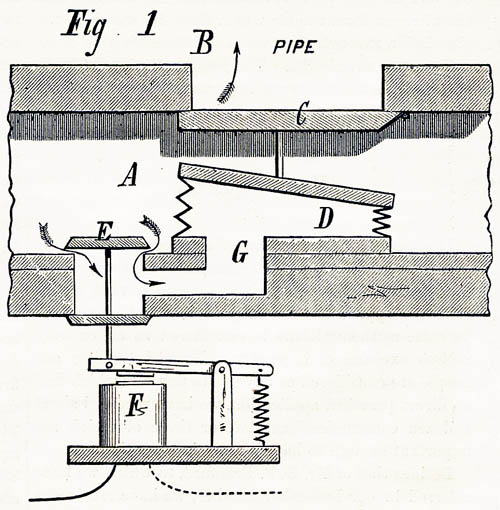Electric Organ
Today, the organ electric. The University of Houston's College of Engineering presents this series about the machines that make our civilization run, and the people whose ingenuity created them.
Nineteenth-century industrialization transformed everyday life. And one machine mirrors that whole sunburst of creative energy. The pipe organ was an enormously complex engine that evolved in close symbiosis with the machinery around it.
As organs grew larger and more complex, mechanical connections between keyboards, and air valves feeding the pipes, grew so cumbersome that the organist needed help to press the keys. In the 1840s, a pneumatic booster called a Barker Lever solved this problem. But another problem lingered: As long as the linkages were mechanical, the console had to sit near the middle of the organ.
Now, quite by accident, I've happened across an 1876 copy of The Manufacturer and Builder. It reports the solution to the long-linkage problem, just after it appeared. A small article titled "Electricity Applied to Church Organs" begins:
Some eight or nine years ago we saw at the shop of one of our prominent organ-builders, an organ of which the keys were so connected with a galvanic battery that the pressure of any key would send the electric current along a corresponding wire, charging in this way an electro-magnet, by the attraction of which the valve of the proper pipe was opened in the wind-chest.
That would've been the late 1860s, when telegraphy was still young. An Atlantic Cable had just been made to work. Solenoids were clicking messages across continents, even oceans. Now they would click messages from keyboards to organ pipes as well.
After that, organs went two ways: tracker and electric. Tracker organists still actuate pipes through long series of levers. Electric organists are more like telegraph operators, acting from afar. But, like a harpsichord or a viola da gamba, a tracker organ is still preferable for certain period music.
In any case, the article goes on to express a true nineteenth-century reaction to electro-magnetic activation. First it suggests stringing wires between churches. That way, one really great organist can play the organs in many churches at once. Cut costs, and provide only the best!
Well, don't laugh. We've all talked about that same kind of cost-cutting in distance education.
But the article doesn't stop there. It also mentions experi-ments with artificial rubber vocal chords -- devices that imitate the human voice. With an utterly straight face, the article sug-gests that, instead of engaging a group of people to sing our praises by proxy, we might develop this new technology. We might replace choirs as well as organists.
After the Civil War we entered a time of overwhelming confi-dence in our ability to invent -- to remake the world. We did not replace individual organists with one great console. And choirs still sing. Nevertheless, gear-by-gear, solenoid-by-solenoid, the creative energy we see here did indeed transform the world. And so we finish today, with an electronic flourish of outro theme music.
I'm John Lienhard, at the University of Houston, where we're interested in the way inventive minds work.
Electricity Applied to Church Organs. The Manufacturer and Builder, Vol. Eight, March, 1876, pp. 64-65. I am grateful to Margaret Culbertson for lending me her volume of this journal.
For more on nineteenth-century organ development, see Episode 1973.
The organ builder mentioned in the article was Hilborne L. Roosevelt.

When solenoid F is actuated, valve E closes. Pressurized air in the bellows empties out from the bottom, pulling valve C open. Air can then flow from the air-chest, A into the organ pipe.